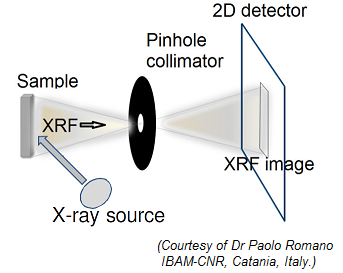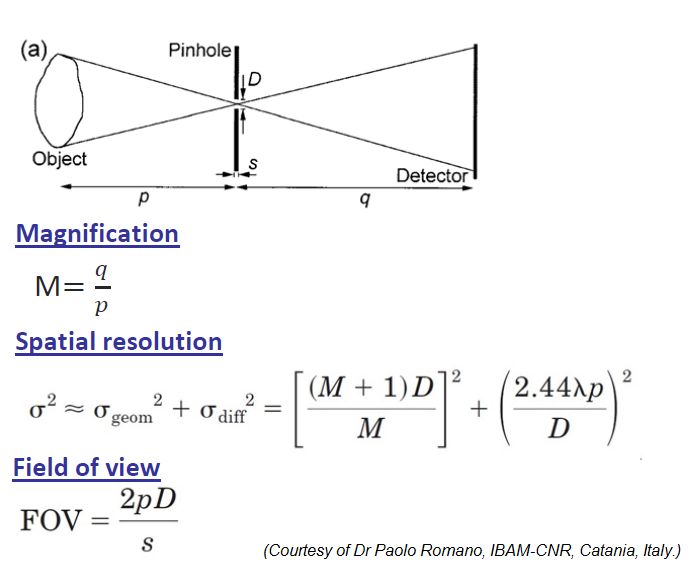5.2.3 Full Field XRF

The design of energy-sensitive CCD detectors opened the possibility of performing 2D elemental imaging without needing to displace neither the sample nor the detector. The concept of a Full Field (of view) XRF spectrometer (FFXRF) was implemented recently by Dr Paolo Romano (INFN, Catania) and works based on the principle of a camara obscura. The x-rays generated from the sample can reach the CCD through a small pinhole collimator and imping in a limited number of pixels, thus creating a specular image of the spectral distribution in the sample surface.
The magnification depends on the ratio of the distances sample-collimator (p) and collimator-detector (q), whereas the spatial resolution depends on the collimator's hole diameter (D) and the magnification (M)

By choosing suitable collimator's hole diameters and changing the distances p and q the FFXRF spectrometers can be tuned as to inspect small areas with high spatial resolution or larger areas with less resolution. FFXRF spectrometers are advantageous because of the simplicity in design, no need to rely on complex translation stages and the possibility of being transported to the object to be analysed, which is a common requirement for the study of art objects.